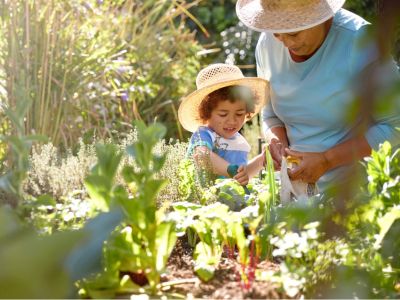Grocery prices are going up. It’s something we can’t escape from, and probably a trend of the future. But you can cut those bills in half if you grow a kitchen garden. A kitchen garden bed is one of the better ways to ensure fresh produce, know what is going into your food, and enjoy the great outdoors.
What is a Kitchen Garden?
Our grandparents had great kitchen garden ideas. Kitchen garden design relies heavily upon what your family enjoys eating. It can be simple, with fresh herbs and a cutting garden to beautify the table. But some gardeners grow a kitchen garden to fulfill all their fruit and vegetable needs. Dwarf fruit trees, fruiting vines and canes, greens and root vegetables, summer foods like corn and tomatoes, all feature prominently. Even small spaces can produce plenty of food if you sow successive crops, use vertical supports, and plant small amounts of diverse foods. The space can be as simple as a raised bed, or a large plot with room to expand.
Simple Kitchen Garden Bed
Much of what we eat can be grown. You have to take into consideration your zone and make sure your selections will thrive where you live. In smaller gardens, a raised bed is a great start for a kitchen garden. Raised beds warm up earlier in the spring and are accessible due to their elevation. They can hold a lot if you use vertical supports for things like beans, peas, cucumber, and other climbing plants. Select a site with plenty of sun, since most produce appreciates plenty of light. Fill the bed with good organic soil and consider using a drip system to keep all the plants well hydrated.
Large Kitchen Garden Ideas
In areas with plenty of space, you can add in more than just some lettuces and root crops. Grow your favorite fruit with a dwarf species. Train grape vines on a fence. Add pollinator attractions in the form of lavender, Calendula, bee balm, and other flowering plants. Keep pests away with companion plants and herbs. Rotate your seed plants annually to prevent disease and insect problems. Learn about techniques like espaliering to keep the area tidy and easy to access. If you have enough space and plan carefully, there is almost nothing that can’t be grown in your kitchen garden.
